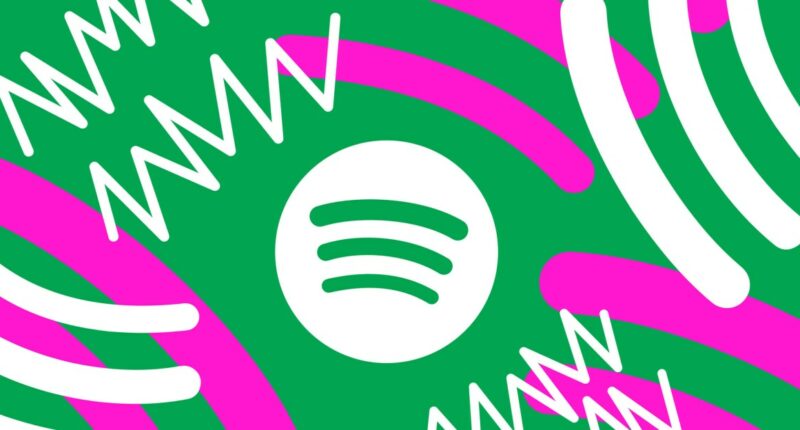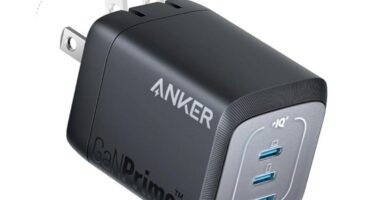Share this @internewscast.com
If you consume music similar to how many people do today — using wireless earbuds, a Bluetooth speaker, or directly from your phone — you likely won’t detect a difference between Spotify’s high-quality 320Kbps streams and its lossless audio. However, if you’re accustomed to using wired headphones at your desk or possess a quality speaker, such as those from Bose supporting Spotify Connect, there’s indeed an advantage to be found here.
Comparing Spotify’s standard quality streams (96Kbps) with the new 24-bit / 44.1kHz lossless FLAC files seems unfair. Even those with relatively untrained ears should discern a difference. Though compression technology has significantly advanced since the era of fuzzy Napster MP3s, there remains a noticeable quality loss at 96Kbps. High frequencies, in particular, may sound muddy and distorted.
Switching from normal to high quality (320Kbps) yields a remarkably noticeable change. Yet, moving from there to lossless or even hi-res lossless on another service like Tidal results in diminishing returns. I’d speculate that most listeners won’t recognize the difference between Spotify’s high-quality streams and lossless in many contexts. Listening to hip-hop with crackly vinyl samples, metal tracks with heavily distorted guitars, or dance singles with over-compressed kick drums makes distinguishing differences challenging. These differences exist — with clearer Kendrick Lamar vocals on “squabble up” and more lively Sudan Archives violin on “DEAD” — yet may be overlooked in the musical dynamics.
Lossless audio shows a significant impact compared to Spotify’s standard high-quality setting in gentler music genres featuring many acoustic instruments and vocals. Throughout testing, my preferred choice (as it was one of the few albums accessible in lossless on Spotify and hi-res lossless on both Apple and Tidal) was Nina Simone’s Pastel Blues.
The variations between lossless and high quality are subtle, no doubt. If not listening attentively, you might miss the slightly different texture of background noise on “Strange Fruit” or the marginally sharper high-hats on “Sinnerman.” When older recordings clip, the resulting distortion is less harsh in lossless too.
Recognizing these minor benefits requires effort on your part. First, you can’t stream Spotify Lossless through the web player; downloading the desktop or mobile app is necessary. Another point is that Bluetooth doesn’t typically support lossless audio due to bandwidth limitations. Spotify itself notes in their announcement that “Bluetooth doesn’t provide enough bandwidth to transmit lossless audio, so the signal must be compressed before being sent.” (Let’s bypass discussions on codecs like LDAC and aptX HD due to their limited support.)
If you want to hear the difference, you’ll need to put your AirPods down and go get a decent set of wired headphones. I do recommend headphones. While you can hear the difference on a good set of speakers, it’s easier to pick out the nuances in headphones without minimal background noise. You’ll need to enable lossless on each of your devices individually; it’s not a setting that will sync.

Spotify has caught some flack, however, for capping its lossless support at 24-bit / 44.1kHz, when Tidal, Apple Music, and Qobuz all offer 24-bit / 192kHz hi-res FLAC support. But, at the risk of upsetting the audiophiles in the audience, you’re not missing out. While I won’t pretend there’s no difference between lossless and hi-res lossless, the improvements are extremely subtle, and not worth the hassle. For one, playing back audio at 192kHz requires additional hardware in the form of an external digital-to-analog converter (DAC), or a select few Tidal Connect-enabled speakers. A DAC can run you anywhere from $50 for a cheap off-brand dongle for your phone to upward of $15,000 for the absolute lunatics out there.
I tested Spotify Lossless, as well as Apple Music and Tidal’s lossless and hi-res lossless, using my MacBook Air connected to a fourth-gen Focusrite Scarlett 18i20. I listened to a variety of styles of music using my PreSonus Eris E5 studio monitors, a pair of Sony MDR-7506 headphones, and TMA-2 Studio Wireless+ headphones from AIAIAI. I spent a lot of time making sure I could play back 192kHz audio, and volume matching the various services only to walk away wondering if I was imagining the differences.
Doing a side-by-side, I felt like the hi-res lossless “Strange Fruit” on Apple Music was ever-so-slightly clearer than the standard lossless version on Spotify. But I also felt like the standard lossless Apple FLAC was slightly less noisy than the Spotify FLAC. So it’s possible that Apple’s encodings are just higher-quality in general. I’m inclined to believe that because I honestly could not tell the difference between Apple’s regular lossless and hi-res lossless versions when played back to back.
Bandwidth also becomes a major issue when playing hi-res lossless files. Unless you’re downloading them for playback offline, just don’t bother. Apple Music frequently choked when trying to skip around a hi-res track and would often pause briefly after playing the first two seconds of a song.
Here’s the thing: Most of us tend to do a lot of our listening on Bluetooth headphones. And those don’t support lossless audio. If you have good wired headphones or a decent pair of speakers, Spotify’s lossless can make a subtle but noticeable improvement to your listening experience. Just don’t be jealous of those other services with “hi-res” audio.
0 Comments






